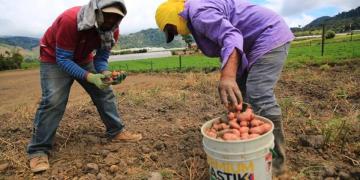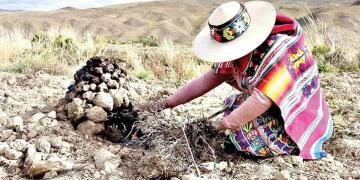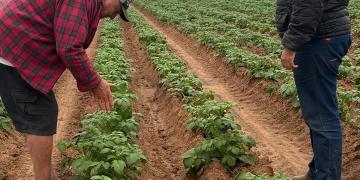Spain (Los Realejos): Ancient Pope at risk of disappearing
First, the scarcity and intensity of the rain that has fallen in the area since January have caused most of this year’s production to rot, and farmers fear losing the seeds they have preserved for 403 years.

José de Viera y Clavijo claimed that the first ancient potatoes planted in the Canary Islands were in Icod el Alto, Los Realejos, in 1622. A tenant farmer brought them from Peru because the area offered good conditions for planting: terraced gardens and high humidity. Four centuries later, this crop is going through one of its worst periods. In Icod el Alto, farmers estimate they have lost 98% of their harvest, and their greatest concern is not having enough seed for next year’s planting.
Drought, rain, wind, mildew, and the Guatemalan moth are some of the main causes that have led to the decline and even the loss of many crops. 2025 has been devastating for the Icod el Alto area. The extreme rains have caused the gardens to rot. Judith Delgado, secretary of the La Papa Bonita Association and owner of several gardens, says that "it rained nonstop for a whole month."
Rotten or vermin
The heirloom potato, which takes six months to be ready for harvesting, is planted in January and harvested in July. It can be found between 700 and 1,200 meters above sea level. The heat is "good for its growth, because the drier the soil, the higher the quality of the product." But this year, many farmers, like Delgado, have barely been able to harvest what they normally would from a single plant. "The weeds have grown so much that you can’t see the potatoes," she explains. The few they have been able to harvest are either rotten or affected by pests, although she insists that "bugs are the least of it right now; the worst has been the water."
Since the Association was founded in 2010 to recover the ancient potato seed, they have worked to preserve it. After years of struggle, they obtained the Protected Designation of Origin (PDO), the only one in Spain and the second in Europe. They are also the only producers and marketers with a PDO. No one else on the island of Tenerife maintains such a high production.
Fifteen years ago, farmers in Icod el Alto lost 90% of their harvest, and years later, history is repeating itself. Thanks to several partners, the seed won’t be lost "completely." But it’s not a sure thing. "We collect the seed we like best, store it in a cool, dark place, and if all goes well, it will be ready to plant again in January," he adds.
Judith Delgado and her partner, Vicente Domínguez, president of the organization, grow thirteen types of potatoes: bonita ojo de perdiz, white, black, and red; azucenas, white and black; pelucas, white, black, and red; colorada de vaga; terrenta; and borrallas, white and red. They haven’t even begun harvesting some of them, but they believe they will be just as rotten and blotchy as those they’ve already harvested. "We promote them and use them in exhibitions, and we encourage other farmers to plant them as well."
Lack of aid
Over the years, the Papa Bonita Association has achieved a key breakthrough: "To ensure that farmers don’t get cheap." Delgado states, "Trucks used to come to the orchards offering one or two euros per kilo. My work doesn’t cost that much." They sell to other farmers, to hotels, but at a "fair and appropriate" price.
Fuente:




